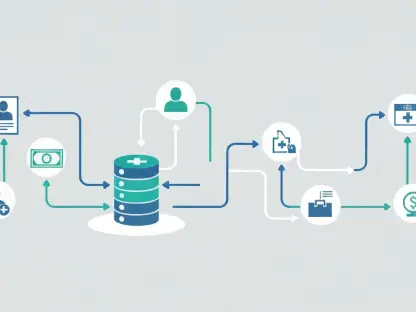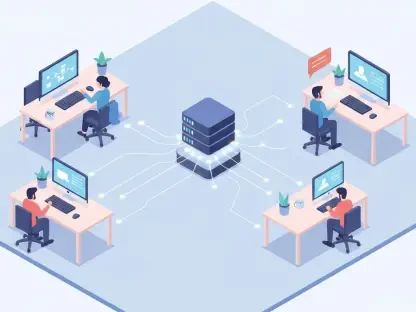In the rapidly evolving corporate landscape, organizations are increasingly turning to artificial intelligence (AI) not just as a supporting tool but as a fundamental component of their strategic framework. The “Why-Not-AI?” transformation reflects a paradigm shift where AI ceases to be merely a tool for occasional tasks and becomes the default mechanism for addressing operational challenges. This shift necessitates a thorough reassessment of processes and decision-making frameworks in businesses across industries. As AI moves from the fringes to the core of business operations, leaders must be equipped to navigate this transformation effectively.
1. Strategic Review and Opportunity Identification
A pivotal step in embracing the Why-Not-AI transformation involves a comprehensive strategic review and identification of potential AI integration points. This process requires businesses to systematically evaluate their existing workflows to highlight areas where AI could provide immediate benefits. These areas typically include processes that are inherently time-consuming or prone to human error, such as data entry, scheduling, and other routine tasks. By focusing on these segments, organizations can catalyze improvements in efficiency and accuracy, thus setting a foundation for broader AI application.
Moreover, this stage is crucial for understanding the unique operational characteristics and challenges faced by different departments. It involves mapping out specific workflows and processes that could be optimized through AI solutions, analyzing where current manual processes fall short, and determining how AI could fill these gaps. This evaluative approach helps highlight tangible areas for AI enhancements and sets realistic expectations for what AI can accomplish in distinct business contexts. A tactful identification of AI opportunities ensures that resources are effectively allocated and the transition to AI-driven operations is seamless.
2. Collaborative Integration Teams
Once AI opportunities are mapped, businesses should form collaborative integration teams comprised of both technical experts and operational specialists. These cross-functional teams are essential in ensuring AI solutions are practical and meet real-world business needs. An example from recent industry trends shows AI’s successful deployment when technical developers work closely with domain experts to tailor AI applications precisely to the business environment. This synergy between technical and operational expertise is crucial because it ensures the AI integration is sensitive to business nuances while leveraging technological capabilities.
These teams play a pivotal role in navigating the complexities of AI implementation within daily workflows, ensuring that AI solutions address practical business objectives. Cross-functional collaboration encourages innovation and problem-solving as both technical and business perspectives are considered when developing AI systems. This integration can lead to the creation of versatile AI tools capable of adapting to evolving business environments, thereby ensuring sustained relevance and effectiveness. By fostering a culture of collaboration, businesses can harness the full potential of AI to streamline operations, capture efficiencies, and spur innovation.
3. AI Competency Metrics and Incentive Alignment
Embedding AI into business operations demands more than just technological integration; it necessitates a shift in how success and employee performance are measured. This shift involves aligning business metrics and incentives with AI-enhanced productivity to encourage the effective adoption of AI across the organization. Metrics must evolve to include assessments of AI competency within performance evaluations, reflecting an employee’s ability to integrate and leverage AI tools effectively. Such an approach not only promotes AI fluency but also drives a culture of innovation and adaptability.
Furthermore, recognition and incentive systems should be structured to reward teams and individuals for successful AI implementations. This means including AI-related achievements as criteria for bonuses, promotions, and acknowledgments, cementing the importance of AI fluency within an organization’s culture. By doing so, companies can foster an environment that values and rewards AI-driven insights and innovations, ensuring that staff at all levels are motivated to embrace AI tools proactively. This alignment helps create a sustainable culture of AI innovation, where employees are encouraged to experiment with and refine AI solutions, ultimately benefiting the organization as a whole.
The Transformational Impact of the Why-Not-AI Approach
This comprehensive approach to AI adoption fundamentally transforms organizational thinking, encouraging a proactive rather than reactive stance on AI integration. By embedding AI as a core organizational principle, businesses can position themselves to not only optimize existing processes but anticipate and adapt to future technological advancements. This shift enhances organizational agility, allowing companies to remain competitive in a rapidly evolving technological landscape.
Moreover, the Why-Not-AI framework underscores the importance of human judgment in a machine-augmented working environment. By liberating human talent from mundane, routine tasks, AI allows people to engage in creative problem-solving, strategic planning, and relationship-building—areas where human capabilities distinctly outperform machine aptitude. Thus, rather than replacing the workforce, AI enables a redistribution of efforts towards more meaningful and impactful work.
A Future-Oriented Perspective
In today’s swiftly changing corporate world, businesses are increasingly embracing artificial intelligence (AI) not merely as a helpful tool but as an integral component of their strategic agenda. This “Why-Not-AI?” transformation signifies a major paradigm shift, highlighting a movement where AI evolves from being an optional tool for occasional use to becoming the standard solution for tackling operational hurdles. This transformation means that businesses across all sectors must thoroughly reevaluate their processes and decision-making frameworks.
AI’s integration into the core of business operations requires leaders to be adequately prepared to handle this transition with competence and foresight. It’s no longer enough to rely on AI sporadically; organizations are recognizing the need to embed AI deeply in their strategies to stay competitive. This might involve updating workplace tools, reconsidering workforce skill sets, and fostering an environment where technology and humans work in harmony.
As AI assumes a central role, companies must assess their current capabilities and future readiness to leverage AI’s full potential effectively. Implementing AI not only as a technical enhancement but also as a strategic cornerstone demands an openness to change and a commitment to innovation. The focus should be on facilitating seamless integration, encouraging agile responses to market demands, and fostering a culture of continuous improvement.









